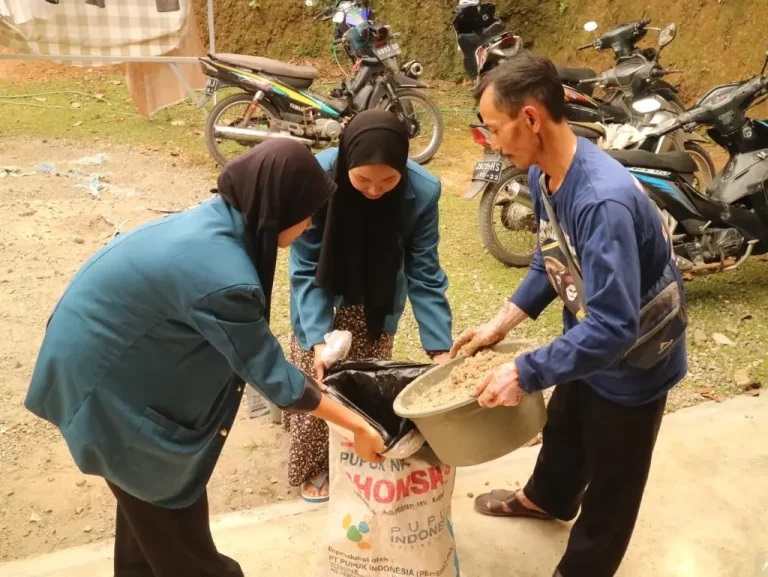

UNAIR NEWS - With many goat farmers in Batok Village, KKN BBK Group of Universitas Airlangga (UNAIR) made alternative animal feed from waste. The KKN BBK Batok 2 group held socialization and training on "Cocoa Shell Waste, an Alternative Source of Animal Feed" for farmers in Batok Village on Tuesday (24/1/2023) at the residence of the Head of RW.
One of the members of KKN BBK 67 Batok 2, Putri Risqiah, said that the activity was an effort to increase knowledge and profitable utilization of environmental waste. So that farmers can utilize waste for alternative animal feed with high nutritional content. Sirlanto, a student of the SIKIA Veterinary Medicine study program, was the presenter of the socialization.
"Socialization by providing information related to the advantages and disadvantages of fermented feed from cocoa shell waste, how to make, and the characteristics of good fermented feed," he said.
Content of Cocoa Beanshell Benefits
Sirlanto said from its nutritional content, cocoa pods can be used as feed for ruminants. The spread has a crude protein content of 6.8 - 11.71 percent; crude fiber 20.79 percent; and fat 11.80 percent. However, of concern is the content of antinutritional compounds in cocoa pods. Such as lignin, tannin, theobromine, and high water content.
"Therefore, fermentation techniques are needed in processing cocoa pods into alternative animal feed," he said.
With this content, the alternative feed will increase livestock digestibility and livestock preference for feed. This includes rising protein and crude fiber content.
In addition, it can suppress the toxic effects of theobromine and tannin substances that inhibit digestion and become an alternative feed source when entering the dry season. And increase body weight and milk production in livestock.
After the socialization, Sirlanto conducted training on making alternative feed from cocoa shell waste. He is also one of the farmers who has been making alternative feed since 2020 until now.
Processing Technique
Sirlanto explained how cocoa shell waste was processed into animal feed, preparing the tools and materials; knives or chopping machines, plastic bags, molasses (cane sugar), EM4, fine bran, rice bran, corn bran, forage, and cocoa pods.
The first step is to dry the cocoa pods first. Then, coarsely chop 3-4 cm of the material. If you use a chopping machine, it is even better. The goal is that the mixing of all feed ingredients can be evenly distributed. Then, mix the EM4 solution (50 ml: 1000 ml) and molasses solution.
"Then put the chopped cocoa pods into a plastic bag and pour the EM4 solution and sugar solution," he said.
Next, put fine bran, rice bran, corn bran, and chopped forage. The next step is to mix all the ingredients and close the plastic bag tightly to achieve an anaerobic atmosphere. This is because microbes can only grow in the absence of oxygen. Then, the cocoa pod feed will be fermented for 14-21 days.
Author: Azhar Burhanuddin
Editor: Feri Fenoria
Source: https://alumni.unair.ac.id/site/article/read/1973/mahasiswa-kkn-unair-berdayakan-limbah-kakao-j.html